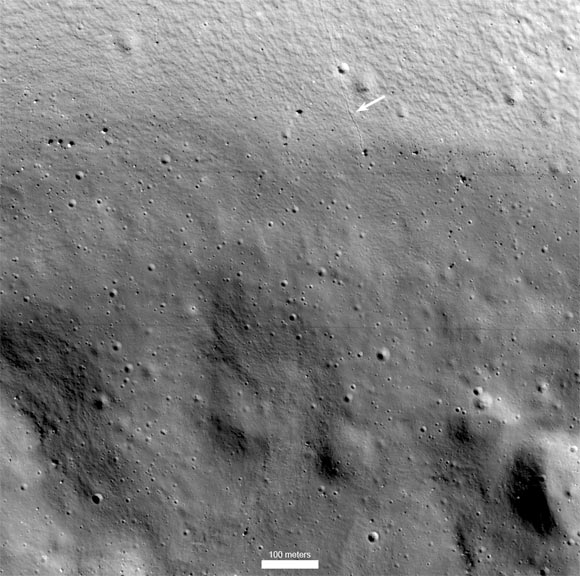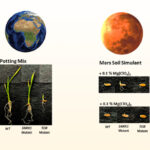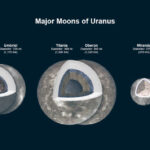NASA’s ShadowCam instrument is flying with five other instruments aboard KARI’s Korea Pathfinder Lunar Orbiter (KPLO), also known as Danuri, which launched on August 4, 2022.
This image of Shackleton crater was captured by NASA’s ShadowCam instrument aboard the Korea Pathfinder Lunar Orbiter. Image credit: NASA / KARI / ASU.
ShadowCam was developed by Malin Space Science Systems and Arizona State University.
This instrument is significantly more light-sensitive than comparable lunar cameras.
It acquires high-resolution images of permanently shadowed regions, which never receive direct sunlight, in service of science and exploration planning for Artemis missions and robotic missions.
Since KPLO entered lunar orbit in December 2022, ShadowCam has been routinely capturing images of the lunar north and south polar regions.
One of ShadowCam’s first images from lunar orbit is the permanently shadowed wall and floor of Shackleton crater, which is found near the south pole.
The level of detail in the image is possible thanks to ShadowCam’s ability to operate in extremely low-light conditions — it is 200 times more sensitive than the Lunar Reconnaissance Orbiter Narrow Angle Camera.
The arrow marks the track of a boulder that rolled down the crater wall.
The observation of these trails helps scientists characterize the boulder shape and velocity and regolith features, furthering our understanding of the geotechnical properties of the Moon.
ShadowCam was designed to offer views into shadowed areas near the poles.

This image of Bruce crater was captured by NASA’s ShadowCam instrument aboard the Korea Pathfinder Lunar Orbiter. Image credit: NASA / KARI / ASU.
The second image, however, was taken under earthshine in the equatorial region of the Moon as part of an instrument sensitivity test.
It reveals the interior of Bruce crater and bright streamers that formed from soil sliding down the crater’s walls.
ShadowCam captured this image just after a new Moon.
During a new Moon, at the same time that we’d see a thin lunar crescent from Earth, a person on the Moon would see a near-full Earth.
Just as a full Moon can provide illumination on Earth, a full Earth can provide illumination on the Moon — this is referred to as earthshine.
While earthshine is about 10 times dimmer than the illumination available in the average permanently shadowed region from sunlight reflected off lunar geologic features, ShadowCam was still able to image the surface using earthshine, indicating the instrument’s ability to see into the dimmer areas of the south pole.
Although ShadowCam was primarily designed to use secondary illumination from lunar geologic features for imaging, the third image, showing Aristarchus crater central peak (left), was captured using earthshine.

This image of Aristarchus crater was captured by NASA’s ShadowCam instrument aboard the Korea Pathfinder Lunar Orbiter. Image credit: NASA / KARI / ASU.
“ShadowCam will not be able to image Artemis astronauts walking on the surface of the Moon if they are in direct sunlight because the powerful light would render the images saturated,” NASA scientits said.
“This image, however, shows that it may be possible using earthshine, if astronauts are spacewalking during lunar night.”
“In this image, the shadow cast by the Aristarchus central peak is from the earthshine that resulted from the Earth being 35 degrees above the horizon at the time.”
“The different tones in the central peak are thought to represent distinct rock types.”
_____
This article is based on text provided by the National Aeronautics and Space Administration.




